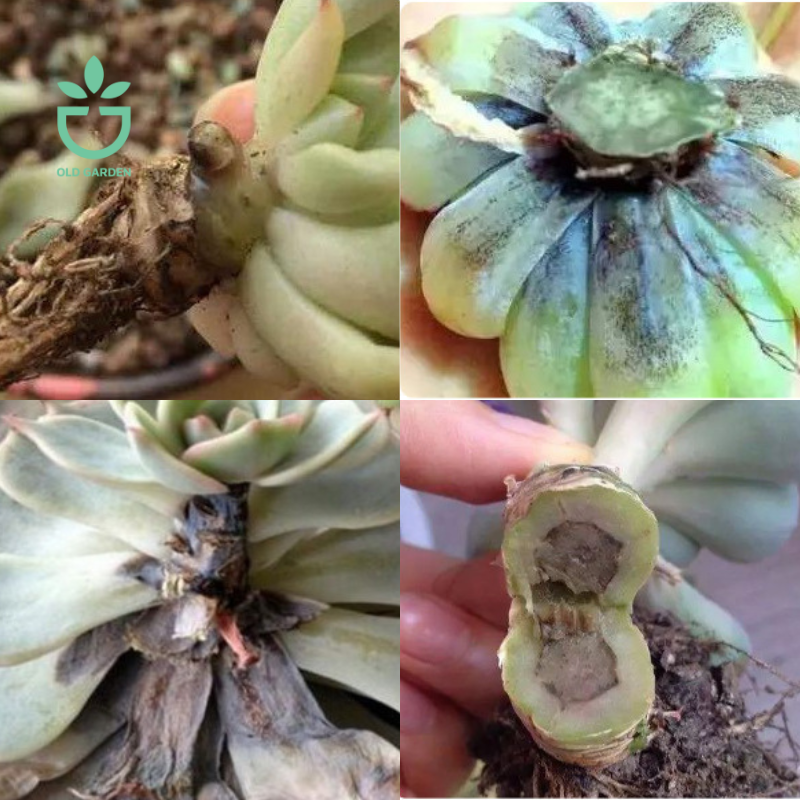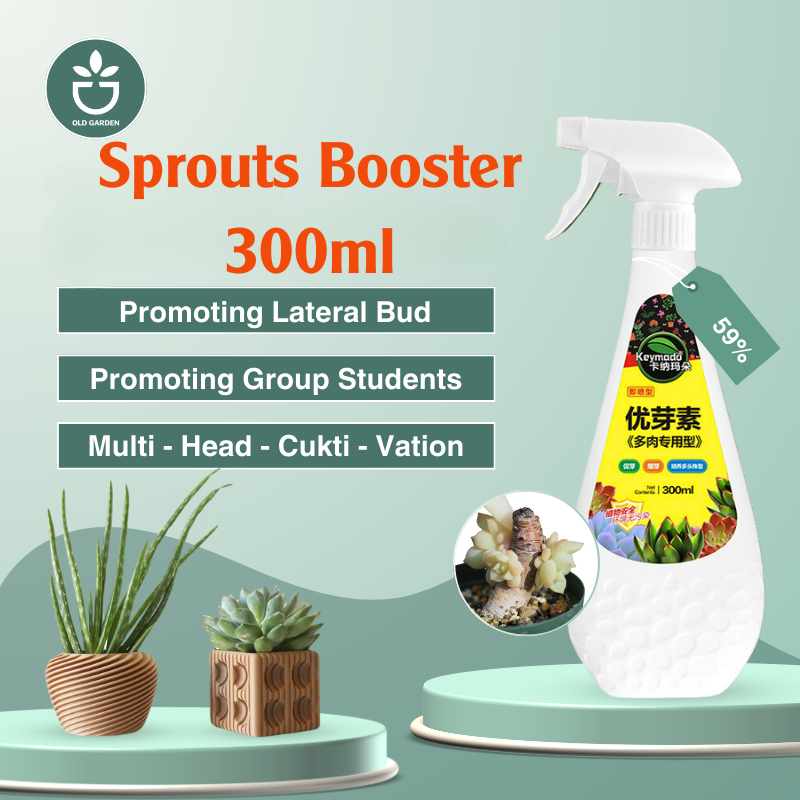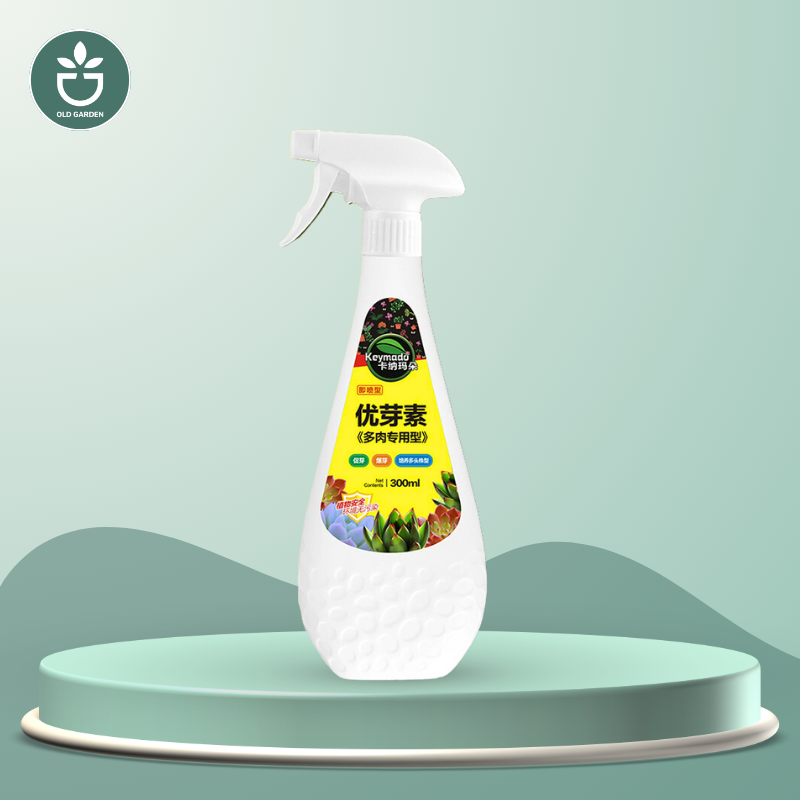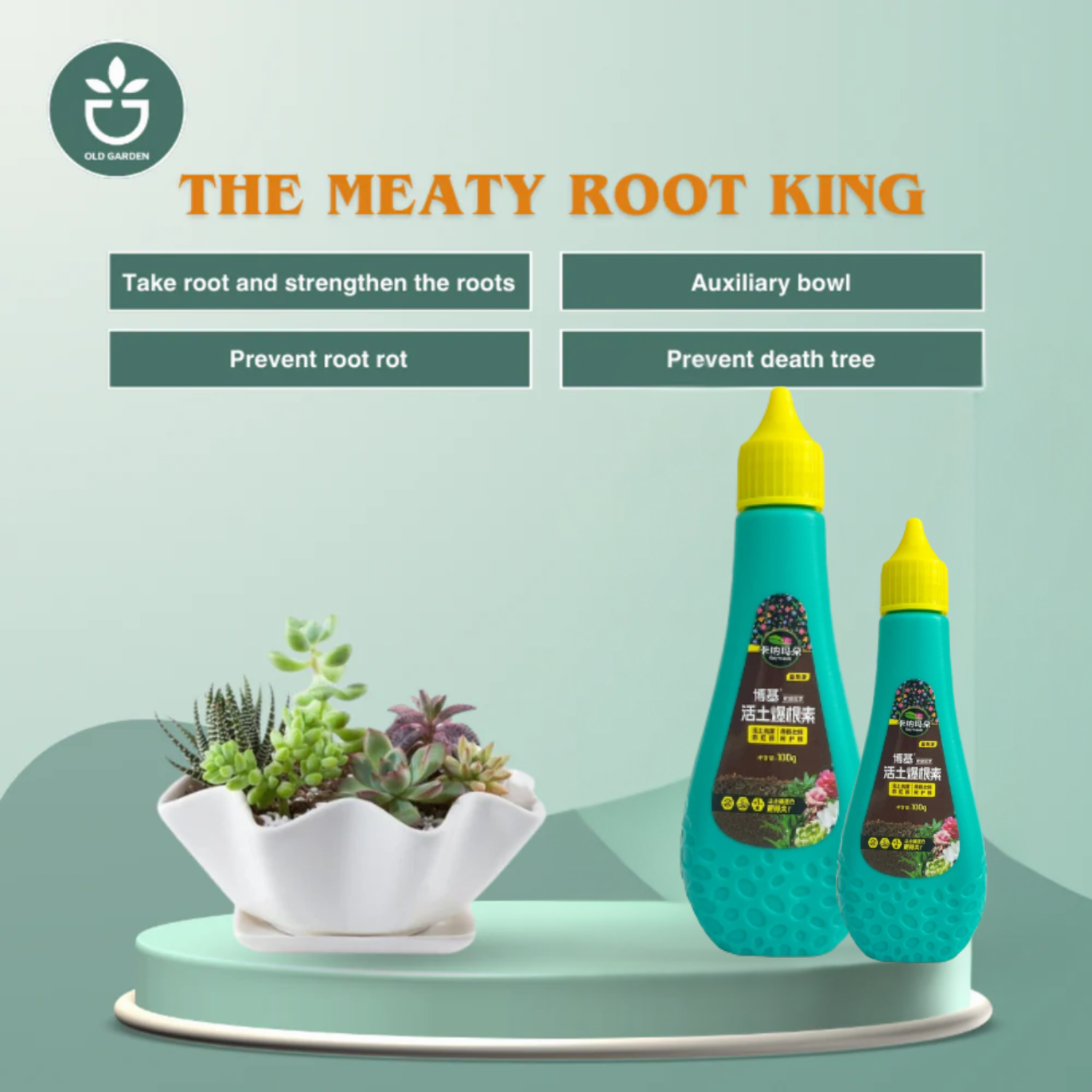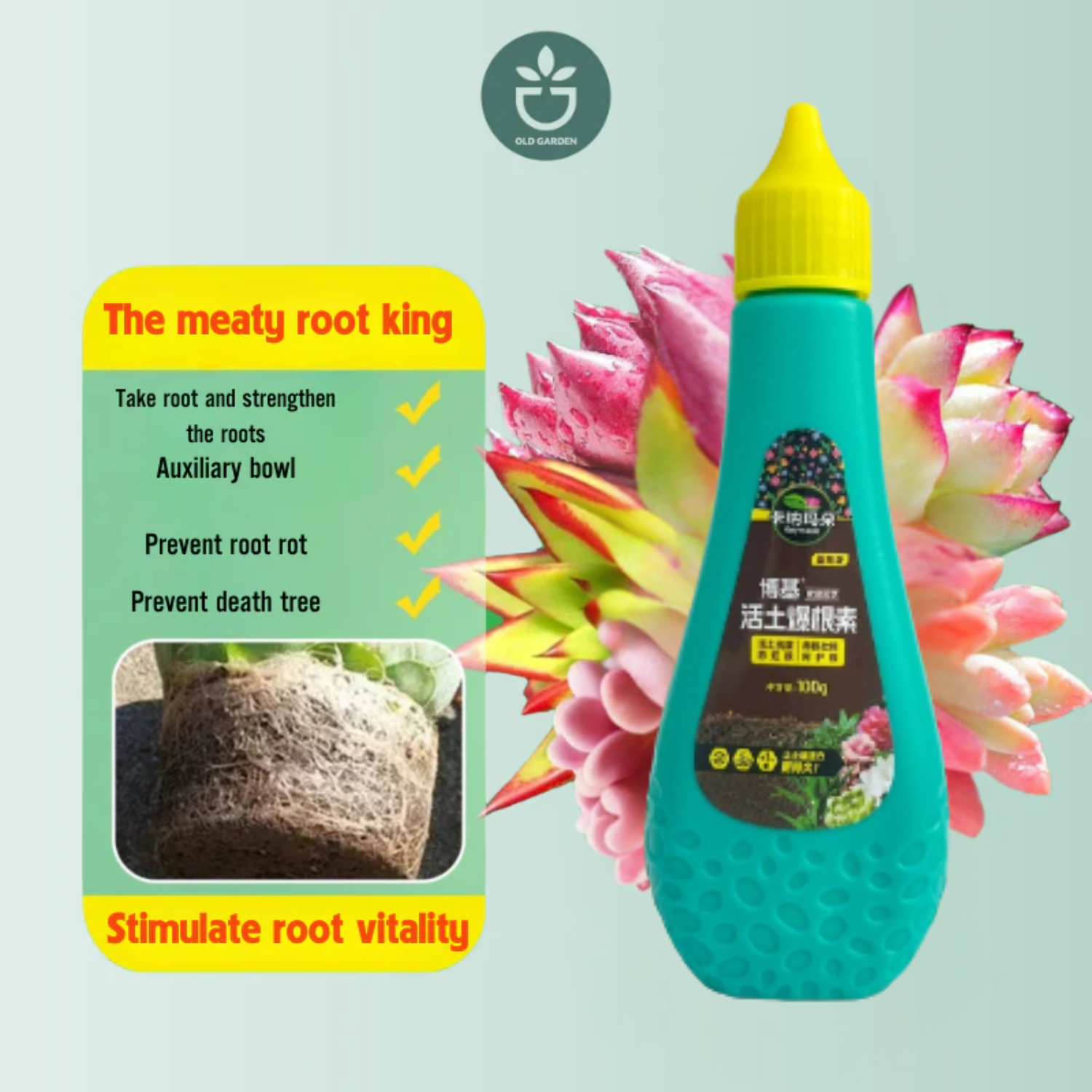What is Black Root Rot?
Black root rot is a fungal disease that affects succulents and other plants. It is caused by one or more species of fungi that attack and infect the roots of the plant. The fungi cause the roots to turn black or brown and begin to rot away. This prevents the roots from absorbing water and nutrients, which can quickly lead to the death of the succulent.
If black root rot is left untreated, it spreads rapidly to other succulents and plants nearby. The fungal spores can travel through water and soil to infect other plants. Entire gardens of succulents can be devastated if black root rot takes hold and is allowed to spread.

That's why it's so important to identify and treat black root rot as soon as possible after symptoms appear. Catching it early can stop the spread of the fungal infection and save your other plants. Untreated black root rot will continue to get worse, rotting away more roots and eventually killing the plant. Acting quickly gives you the best chance of saving your succulents.
Symptoms of Black Root Rot
Black root rot is characterized by some telltale symptoms in succulent plants. The first sign is often the roots turning soft and discolored, usually becoming brown or black. The roots will start to rot away and die off.
As the roots degrade, the plant is no longer able to take up water and nutrients effectively. This leads to the leaves of the plant wilting, even when the soil seems moist. The leaves may start to yellow and drop off as well.
With the roots compromised, you'll notice a dramatic slowdown of growth. New leaves and offshoots will stop developing. The plant will become stunted.
In advanced cases, the root rot spreads upwards into the main stem and causes a general internal rot. This leads to the entire plant collapsing as the base rots away.
Catching the symptoms early is crucial to save the plant. At the first signs of soft, discolored roots, action should be taken before the rot spreads further into the root system and up the plant. Quick intervention can help stop the rot and regrow healthy white roots.
Causes and Spread of Black Root Rot
Black root rot is caused by various fungal pathogens that thrive in damp conditions. The most common causes of black root rot are overwatering and poor drainage. When succulent soil remains wet for too long, it creates the ideal environment for fungal spores to germinate and infect the roots.
Overwatering is the number one cause of black root rot in succulents. Succulents store water in their leaves and stems, so they require less frequent watering than other plants. If succulents are watered too often, the soil remains soggy and deprived of oxygen. This allows fungal pathogens to rapidly multiply and attack the root system.
Poor drainage also contributes to black root rot. Succulents need soil that drains quickly. Dense, compacted soil or a lack of drainage holes prevents excess moisture from escaping. This saturated soil provides prime conditions for fungal growth.
The fungal pathogens that cause black root rot spread through contaminated tools and infected soil. If gardening tools become contaminated with fungal spores, they can transfer the infection to healthy plants. The fungi also produce microscopic spores that travel through the soil from plant to plant. Once black root rot takes hold in one succulent, the fungi can rapidly spread to surrounding plants.
By understanding what causes black root rot and how it spreads, succulent growers can take steps to prevent this harmful disease. Providing well-draining soil, proper sunlight, and infrequent watering helps create an environment unfavorable to fungal growth.

Dangers of Black Root Rot
Black root rot is incredibly dangerous for succulents and can rapidly kill plants if left untreated. The fungus spreads quickly through the soil, infecting the roots of nearby plants. Within days, the rot can spread from one succulent to an entire collection.
The infected roots turn black and mushy as the fungus advances. It blocks the roots from absorbing water and nutrients, essentially starving the plant. Without healthy roots, the succulent is unable to sustain itself and will quickly decline.
Left unchecked, black root rot fungi can wipe out an entire succulent collection in a short period. The spores easily travel between pots and infect any susceptible plants. Home growers may suddenly find their prized succulents dying at a rapid rate.
By the time aboveground symptoms manifest, such as soft black leaves or sudden plant death, the rot is usually well established underground. To have any chance of saving infected plants, immediate and aggressive treatment is required at the first sign of the fungus. Taking a wait-and-see approach almost guarantees the succulent will not survive.
Due to the rapid spread and high fatality rate, black root rot is one of the most destructive diseases facing succulent enthusiasts. Preventing fungal infection is critical to protect your collection. Consistent monitoring and early treatment are essential to stop the fungus in its tracks.

How to Prevent Black Root Rot
Black root rot is a very common fungal disease that affects succulents and other plants. While it can be difficult to treat, prevention is the best way to protect your succulents.
Here are some tips for preventing black root rot in your succulents:
- - Allow soil to dry out between waterings. Overwatering is one of the main causes of black root rot, as the fungus thrives in damp conditions. Allow the soil to dry out completely before watering again. Check the soil moisture by sticking your finger into the soil to gauge if it is dry 1-2 inches down.
- - Use sterile, well-draining soil. Purchase commercial cactus/succulent soil or make your own mix with equal parts potting soil, coarse sand, and perlite. This creates a quick-draining soil environment. Sterilize bags of potting soil by baking at 180°F for 30 minutes to kill fungal spores.
- - Disinfect tools after use. Clean any tools, pots, and gardening implements with a 10% bleach solution after using them on plants. This prevents accidental spread of fungus between plants.
- - Isolate infected plants. If you notice any plants with signs of infection, immediately isolate them from healthy plants to prevent the fungus from spreading further. Handle infected plants last when caring for your collection. By allowing soil to dry out, using proper soil, disinfecting tools, and isolating sick plants, you can help prevent black root rot from taking hold in your succulent collection. Consistent prevention is key to protecting your plants' health.
How to Treat Black Root Rot
If your succulent plant is infected with black root rot, prompt treatment is essential to save the plant and prevent the disease from spreading. Here are the steps for treating black root rot:
Remove Infected Plant from Soil
Carefully remove the infected plant from its pot and shake off as much of the old soil as possible. Discard this old soil as it is likely contaminated with the fungus. Do not reuse this soil
Cut Off Diseased Roots
Examine the roots and use sterilized pruners or scissors to cut away any blackened or mushy roots. Remove all diseased root material so only healthy white roots remain.
Replant in Fresh Sterile Soil
Repot the plant in a clean container using new sterile succulent/cactus soil mix. Make sure the container has drainage holes. The fresh soil will allow new healthy roots to regrow.
Use Fungicide Drench
Water the replanted succulent with a fungicide drench, following product instructions. The fungicide will kill any remaining root rot fungus and help prevent reinfection. Allow soil to dry out between waterings. Promptly treating black root rot by removing infected parts, sterilizing the roots, repotting in fresh soil, and using a fungicide gives succulents the best chance of recovering from this harmful disease. Continued care and monitoring is needed to ensure the rot does not return.
Introducing Black Root Nemesis
Black Root Nemesis is an organic fungicide product specifically formulated to prevent and treat black root rot in succulents. This innovative product provides a natural and effective solution to this detrimental disease.
Black Root Nemesis contains a unique blend of plant-based ingredients that have antifungal properties to combat black root rot. The active ingredients penetrate the soil to reach the roots and kill off fungal spores and hyphae. Unlike chemical fungicides, Black Root Nemesis works without harming beneficial microorganisms in the soil.
One of the key benefits of Black Root Nemesis is that it can be used both as a preventative treatment and as a cure for existing infections. For prevention, it strengthens the natural defenses of succulents, making them more resistant to fungal diseases. As a curative, it stops the spread of active infections and kills off the fungus.
With the rising threat of black root rot to succulent collections and nurseries, Black Root Nemesis provides a safe and reliable solution. It is lab tested and proven effective at controlling this destructive disease. By using Black Root Nemesis, succulent growers can protect their valuable plants and avoid the headaches of lost plants and contaminated soil.

How to Use Black Root Nemesis
Black Root Nemesis is easy to use for both prevention and treatment of black root rot in succulents.
For healthy plants, use it preventatively. Dilute 1ml of Black Root Nemesis concentrate with 1 liter of water. Use this diluted solution to water the base of healthy plants every 15-20 days. This will help prevent the fungi from taking hold.
For infected plants, use a higher initial dosage followed by regular maintenance dosing. Dilute 1ml of concentrate with 0.5 liters of water. Use this to water the base of infected plants every 7-10 days. This stronger dose will help kill existing fungi.
For severely infected plants, start with an even higher initial dose. Dilute 2ml of concentrate with 0.5 liters of water. Use this to water the base of severely infected plants every 3-5 days until improvement is seen. This very high initial dosage helps kill fungi in plants that already have advanced infections.
After initial treatment, continue to use the maintenance dose of 1ml per 0.5 liters every 7-10 days. This will prevent the black root rot from recurring.
Always apply the diluted Black Root Nemesis solution directly to the base of the plants and surrounding soil. Watering the roots and soil is necessary to kill fungi where it thrives. Consistent use will lead to healthy roots and protection against further spread.
Benefits of Using Black Root Nemesis
Black Root Nemesis is an effective treatment for black root rot in succulents. It offers several key benefits:
- - Kills Fungus Causing Black Root Rot: The active ingredients in Black Root Nemesis work to kill the fungus that causes black root rot disease. When used as directed, it can eliminate active infections.
- - Can Be Used as Preventative and Cure: Black Root Nemesis can be used on both healthy plants, as a preventative treatment, as well as on infected plants showing symptoms. It is effective at both preventing new infections and curing existing ones.
- - Safe for Plants and Environment: The formula is plant-safe when used as directed and won't harm succulents or the environment. It only targets the fungus causing the root rot, leaving your plants and soil healthy.
By leveraging these benefits, Black Root Nemesis provides an all-in-one treatment to protect succulents from the devastating black root rot disease. Used properly, it can stop the disease in its tracks and prevent it from spreading.
The Importance of Treating Black Root Rot
Black root rot can be devastating for succulent collections if left untreated. This fungal disease spreads quickly through the roots and lower stems, causing decay. Within days or weeks, an infected plant will collapse and die. The fungus then remains active in the soil, releasing spores to infect neighboring plants.
It is crucial to treat black root rot as soon as it appears to prevent the loss of prized succulents. Effective fungicides applied correctly can eliminate the fungus and save infected plants. Treating individual cases also prevents the fungus from spreading via soil, water, and roots to the rest of the collection.
Left unchecked, black root rot may spread rapidly through a succulent collection or nursery. The fungus can travel from plant to plant through shared soil and water. As more plants become infected, the fungus proliferates, releasing more spores into the environment. Within a short period of time, black root rot can decimate an entire succulent collection or yard.
By promptly diagnosing and treating any plants showing signs of black root rot, the fungus can be controlled before it impacts additional plants. The health and continuity of the whole succulent collection can be maintained with proper treatment. Losing a few plants to black root rot is always better than losing the entire collection.

